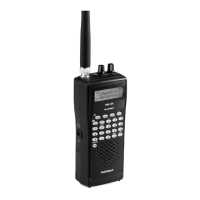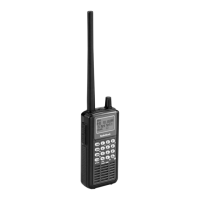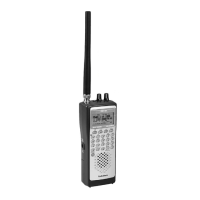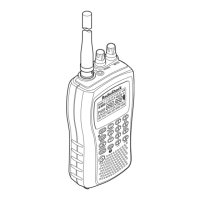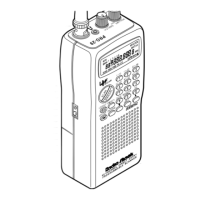7
Adjustment of Coils L23, L24, and L26
Notes:
z Be very careful when doing coil pitch adjustment
because it greatly affects the frequency.
z Secure the coil with glue after alignment. Be sure
the glue is dry and the coil is secured. Also, be
sure that the environmental temperature is nor-
mal. Then, repeat VCO (PLL2 and PLL1) align-
ments on Page 6.
Each coil should be adjusted carefully by changing
the pitch of the coil little by little using a non-metallic
tuning tool as shown in Figure 3.
Increase the pitch of the coil when the measured volt-
age at TP2 or TP3 is higher than the voltage listed in
Table 2 for the PLL2 VCO alignment, PLL1 VCO1 align-
ment, and PLL1 VCO2 alignment.
Decrease the pitch of the coil when the measured volt-
age at TP2 or TP3 is lower than the voltage listed in
Table 2 for the PLL2 VCO alignment, PLL1 VCO1 align-
ment, and PLL1 VCO2 alignment.
Figure 3
Table 2
Figure 4
Use
non-metallic
tuning tool
PCB
Coil
Frequency Counter
TP1
Unit
Under Test
gnitteSlortnoCnoitcennoCtnemurtsnItseTtsujdAnoitamrifnoC
.NO:lortnocEMULOV/FFO
.WCC:lortnocHCLEUQS
.zHM471o
tenuT
ycneuqerfehttcennoC
.1PTotretnuoc
.4erugiFeeS
---retnuocycneuqerfehtmrifnoC
.zHk1-/+zHM577.455sdaer
Reference Frequency Osc. Confirmation
Note: Care should be taken not to make any contact between TP1 and the shield case.

